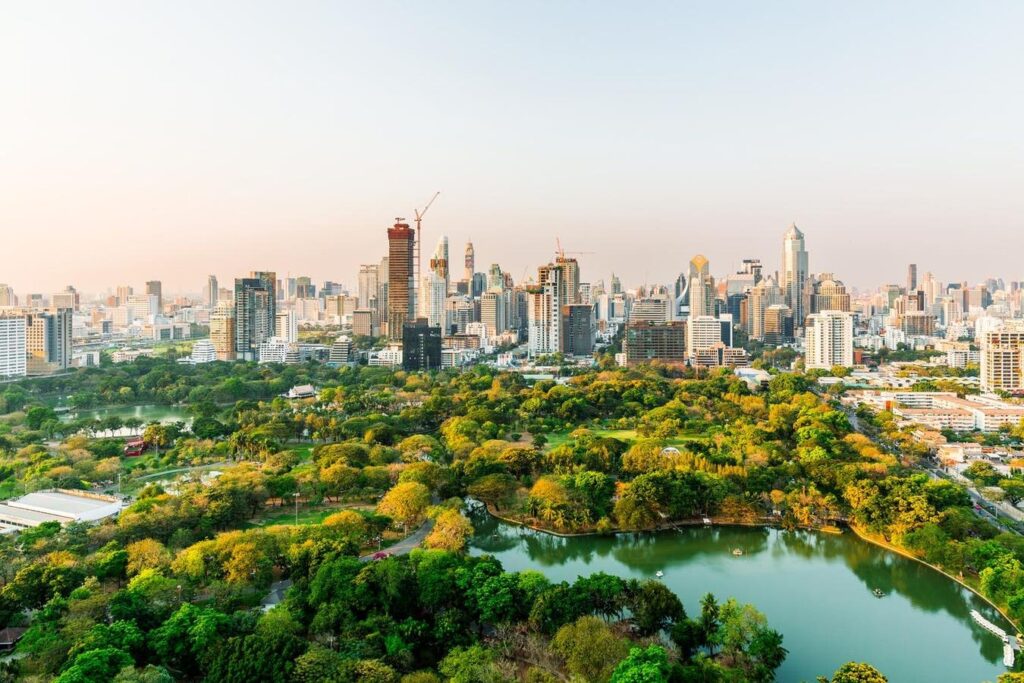Pierrick Bouffaron, Operating Partner for Entropia Capital, a global investor in technology with offices in Hong Kong, Luxembourg and NYC.
Southeast Asia stands at an inflection point in its innovation journey. The region’s startup ecosystem, long dominated by consumer-facing platforms, is now grappling with the next big question: how to build enduring, globally competitive companies in more complex and capital-intensive sectors like energy, manufacturing and frontier technologies.
I believe the answer lies not in importing blueprints from Silicon Valley or China but in developing a homegrown strategy—one that can transform Southeast Asia’s constraints into advantages and help build innovation systems suited to its economic and cultural realities.
Harnessing The Region’s Diverse Capabilities
This approach starts with recognizing the distinctiveness of the region’s environment. Southeast Asia is largely seen as fragmented due to its eleven countries, multiple languages and legal systems, and uneven levels of economic development. But that same fragmentation can become a source of strength. It offers startups an opportunity to design for diversity, build for complexity and scale through modularity.
Instead of assuming a uniform addressable market, companies can utilize capabilities across borders—for example, engineering talent in Vietnam, design and operations in Indonesia or regulatory expertise in Singapore. In my experience, these distributed models aren’t bugs—they’re features.
Equally important is the region’s positioning at the crossroads of global tech powerhouses. Southeast Asia stands out as one of the world’s most promising regions for sustained economic growth over the coming decade, fueled by a young population, increasing digital penetration and rising middle-class consumption. In consumer tech, this creates a fertile ground for experimentation—where the influence of both U.S. and Chinese platforms meets local consumption patterns shaped by social commerce, mobile-first behavior and informal sector dynamics. It’s a region where platforms must adapt quickly and build with cultural nuance, not just engineering horsepower.
Understanding The Nuances For Deep Tech Startups
But while consumer tech thrives on scale and network effects, deep tech demands a different strategy. The commercialization of climate tech, biotech, advanced materials or robotics doesn’t move at the speed of viral user growth. In my experience, it depends on long-term partnerships, infrastructure, access to industry and regulatory pathways.
This is where Southeast Asia’s infrastructure-building momentum can provide business leaders with a unique advantage. Across Vietnam, Indonesia, Malaysia and the Philippines, governments are investing heavily in energy systems, logistics, agriculture modernization and digital infrastructure. These efforts create a ready landscape for startups that can plug into national priorities and deliver homegrown solutions—not abstract tech for global markets, but tangible systems aligned with regional development.
There’s an opportunity here to leapfrog—not necessarily in creating novel technologies but in deploying them faster, closer to the ground, and in ways that solve critical bottlenecks. For example, if you’re a leader of a deep tech venture in a sector like renewable energy, water management or health diagnostics, aligning with government agendas and industrial transformation efforts can allow you to scale by building with and for the system. This is a different type of innovation playbook: less about disruption, more about integration.
To make this model work, Southeast Asia must also embrace a culture of strategic trade-offs. Not every trend or imported model from more mature ecosystems is worth pursuing. The region may not be ideal for funding mega-rounds or sustaining capital-intensive moonshots with long exit horizons. Yet I believe that this constraint, far from being a weakness, can serve as a catalyst for building smarter and more sustainable.
How Business Leaders Can Seize The Region’s Next Wave
If you are leading or investing in innovation in the region, don’t focus on chasing speed or inflated valuations; rather, cultivate ventures designed for capital efficiency, close-to-revenue business models and real market deployment. Success in Southeast Asia may be less about exponential scaling and more about embedding innovation into tangible systems grounded in the economic and social realities of the region.
At the ecosystem level, coherence matters more than isolated victories. Policymakers and investors alike can make a critical difference by supporting the connective tissue that allows innovation to thrive: education pipelines aligned with industry needs, procurement programs that open pathways for emerging companies, regulatory frameworks that enable responsible experimentation and cross-border standardization efforts that make regional scaling viable.
As a business leader, your engagement in these scaffolding efforts can be transformative. There are a number of ways you can help strengthen the broader system while advancing your own strategic interests. For example, consider investing in applied R&D, participating in industry consortia, collaborating with educational institutions to shape curricula and/or supporting cross-border partnerships.
Singapore’s two-decade-long journey beyond financial intermediation—through sustained investment in semiconductors, AI governance and sustainability technologies—is a signal of what long-term commitment can achieve. Vietnam’s ambition to emerge as a high-tech manufacturing hub, Malaysia’s industrial transformation roadmap and Indonesia’s sweeping energy transition plans all offer similar anchor points where private sector leadership can align with national and regional priorities.
However, without greater regional coordination, many promising innovations risk being confined to national markets. As a leader, you can participate in efforts that promote knowledge transfer, cross-border collaboration and regional platform-building to help ensure Southeast Asia’s startups can scale beyond pilot projects and local successes.
Final Thoughts
I believe what the region needs most is long-term strategic commitment—not reactive pivots every time global trends shift, but rather sustained focus on building an innovation ecosystem that thrives on Southeast Asia’s own terms. In my experience, this involves resisting the urge to replicate models from elsewhere and instead doubling down on the region’s unique strengths: agile and resilient talent, digital-first adoption patterns, growing infrastructure investment and the emergence of a new generation of regional capital.
Southeast Asia does not need a Silicon Valley clone. It needs an innovation architecture that transforms diversity into agility, complexity into opportunity and infrastructure investment into a deep tech future. If you help shape that evolution—by building ventures designed for integration, resilience and regional relevance—you can not only unlock tremendous business potential but also be part of forging a model of innovation leadership that the world has not yet seen.
Forbes Business Council is the foremost growth and networking organization for business owners and leaders. Do I qualify?
Read the full article here











